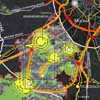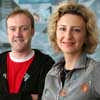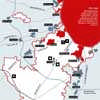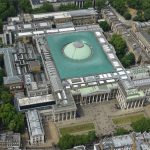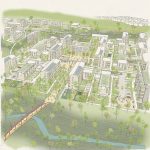Moscow City Agglomeration Development Concept Competition, Architecture Contest, Building, Design
Moscow City Agglomeration Development Concept Competition
Russian Design Contest – design by various architects
17 Oct 2012
Moscow City Agglomeration Competition Results
Moscow City Agglomeration Development Contest
PLANS FOR A NEW MOSCOW PRESENTED
At the end of August nine international teams presented their final projects for the draft concept for the development of the Moscow agglomeration to a group of experts and the client, the Moscow Committee for Architecture. At the beginning of September, they were judged by an international jury, headed by Deputy Mayor Marat Khusnullin. They judged proposals for the Moscow agglomeration as a whole, for the new extension of the city and for a new federal government centre to be located in the new extension. In the last category the project of the Urban Design Associates team was the winner, in the two other categories the team of Antoine Grumbach.
The competition for the design of a draft concept for the development of the Moscow agglomeration was announced after president Medvedev agreed with the governor of the Moscow region to transfer a part of the region’s territory south west of the city to the municipality.
The aim of enhancing Moscow’s territory 2,5 times was to relief the pressure on the city that is dealing with enormous traffic problems. At the same time, it was announced that the federal government would move its offices from the centre of Moscow to the new territory. The competition that was commissioned by the Moscow Committee for Architecture and organized by the Moscow Masterplan Institute, was based on the model of the Grand Pari(s) competition that was initiated by French president Sarkozy in 2008. Nine teams were selected on the basis of their portfolio’s.
For the first time in history, planners from all over the world were looking at the development of Moscow not just as a city, but as a metropolitan agglomeration. This is very important, since Moscow’s traffic problems are mainly caused by the daily migration to the central city by people from the agglomeration. The creation of new centers of working and living could be a way to solve this problem. The big question is where to create these centers: in the agglomeration or inside Moscow? Though most of the competitors stress that it is as important to densify the city within its borders, as it is to create new centers outside, the extension of the city is something to be dealt with – it is a development that has been taking place ad hoc for the last 20 years.
Moscow City Agglomeration Development Contest Projects
Project by the Ostozhenka team:
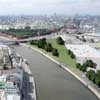
image from architects
The Ostozhenka team seems to take the most radical position of all competitors by proposing to freeze urban development in the new territories, using them exclusively for the creation of recreation areas, agricultural land and forestry. All new construction should be concentrated in former industrial sites within the existing borders of the city.
Project by the Urban Design Associates team:
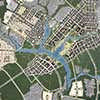
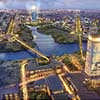
images from architects
Project by the TSNIIP team:
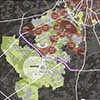
image from architects
Project by the Chernikhov team:
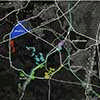
image from architects
Actually all teams propose to desify the existing city. In general, many teams have produced converging projects where technical aspects or just common sense appear to prevail over conceptual and artistic considerations. In this perspective, three projects can be considered more of less generic – the projects of the Urban Design Associates, TSNIIP and Chernikhov teams don’t really make clear choices but develop their project by juxtaposing obvious development potentials.
On top of this Urban Design Associates team proposes a detailed project for the government centre with an artificial lake as the binding element between the different quarters. With attractive imagery this project was especially liked by the jury, which it to considered this project the best for the federal government center.
Project by the Bofill team:
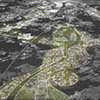
image from architects
Project by the Grumbach team:
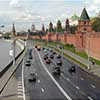
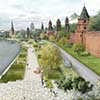
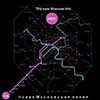
images from architects
The Bofill and Grumbach teams choose to concentrate new construction in a long linear development reaching out of the city, motivating this by the idea that this is represents the natural growth pattern of the city. Bofill’s project consists of a wave-like development that mixes urban settlements with a park landscape. The Grumbach project uses the RER model that we know from Paris, and includes an compehensive public transport plan and detailed projects for the development of the areas around the stations. These appealing proposals made the jury declare it the winning project for both the Agglomeration and the New extension categories.
Project by the l’AUC team:
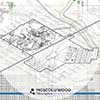
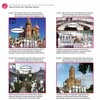
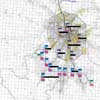
images from architects
Almost all projects propose a rail connection between the Vnukovo and Domodedovo airports parallel to the Moscow Ring Road, but only the l’AUC team develops this as the central axis of the new development: a parallel city that connects both existing and new settlements in the extension and links up with the existing express rail connections that currently serve the airports. More detailed projects are presented for 10 sites evenly distributed within the existing city and in the South-West extension. They include a Luxury River Area, A Slow City Area, a University Research and Development Area and the Federal Government center.
Project by the OMA team:
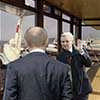
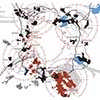
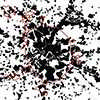


images from architects
The OMA team also works with development clusters, but they are not just located in the city and the Southwest. The displacement of the government agencies and ministries as a trigger for the establishment of urban settlements outside the city is taken to its extreme: they are not concentrated in one new federal government centre but distributed around the city near existing developments that are related to the specific character of a ministry or agency: The ministry of border control near an airport, the ministry of transport near a railroad test site, the ministry of energy near a centre for nuclear science etc. On the whole the OMA project concentrates on the invention of new instruments like taxation, land use regulation and land swap rather then the creation of new urban configurations.
Project by the Secchi teams:
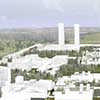
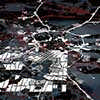
images from architects
In contrast with the OMA plan the project by the Secchi teams is the most architecturally articulated. Not transport lines define the urban development but urban form. It proposes to shift the centre of gravity of the city towards the south west. For this it creates a large square that reaches over the Moscow ring Road and unites city and countryside. It attempts to erase the Moscow Ring Road, that in all other projects features as a rigid border of the city.
Though the jury has chosen some project as being the best, there is little chance that one or another project will be realized. However, all teams have produced large reports that will be thoroughly studied by the city and the Masterplan Institute. This will give the city a large catalogue of possible solutions and development strategies that it can use to solve the problems of the Moscow agglomeration.
28 Jun 2012
Moscow City Agglomeration Development Competition News
International Consortium including British firm McAdam Architects takes first place in second round of Moscow City Agglomeration competition
Presentations took place in Moscow on 22 June 2012 for the second stage of the competition, in which 9 teams presented the first editions of concepts for the city agglomeration development, including the existing city and the new south western sector of the agglomeration.
The international consortium, lead by well-known Russian urbanist – Andrey Chernikhov, and including McAdam Architects, Tower 151, Georgi Stanishev and Ginsburg Architects were awarded the highest score by a panel of international experts with OMA taking second place.
Andrey Chernikhov:

image from architects
The consortium suggested that, instead of looking at new development in the south western sector, in the first instance an abundance of brown field and other available sites within the existing city boundaries should be attended to. They highlighted vast areas occupied by goods railways and disused industrial sites from Soviet times, as prime areas for regeneration and expansion, as well as a re-thinking of transport networks to alleviate pressure on existing systems.
Their radical proposals have sparked a debate as to the validity of the brief which emphasises the need to expand development into the south western sector.
James McAdam who attended the presentations said: the process is evolving into a fascinating discourse on how a major capital can tackle the problems of expansion and regeneration on a vast scale. As a consultation procedure the range of ideas being suggested are incredibly diverse and could be pooled as a powerful medium for Moscow’s future.
Final concept presentations are scheduled to take place at the end of August.
Moscow City Agglomeration Development Concept Competition images / information received 280612
27 Apr 2012
Moscow City Agglomeration Development Concept Competition 2012
OMA wins first round of the Moscow City Agglomeration Development Concept Competition
Moscow, 27 April, 2012 | A consortium of experts led by OMA scored the highest of the 10 teams that completed the first stage of the competition to develop the concept of the Moscow Agglomeration.
Moscow Agglomeration Phase 1:
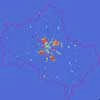
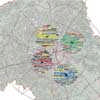
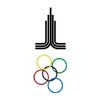
images © OMA Strelka Meganom Siemens
In 2011, the Russian Federation Council confirmed that the city of Moscow will annex 150,000 hectares to the southwest, making Moscow 2.4 times its current size. The expansion is designed to relieve pressure on the historic city center by redistributing the working places to the annexed part of the Moscow Oblast, thereby addressing transport, ecological and social issues that result from high levels of commuting. Before Moscow’s new administrative borders come into force in July this year, the Council called for a concept for the development of the Moscow Agglomeration, and in February this year the Council invited 10 teams to participate in the development of this concept.
For the first round of the competition, focused on a plan for the Moscow Agglomeration as a whole, OMA proposed a joint framework for the development of Moscow and the Moscow Oblast, under which the administrative border and political mandate could address the entirety of the Agglomeration. OMA proposed logistical hubs outside Moscow’s current boundaries which would be linked to the City and the Oblast through high-speed rail, integrating all forms of infrastructure: transport, broadband, industry, and energy provisions. The proposal also suggested that the development would not rely solely on government funding, but could introduce a public/private mix.
On the proposed development strategy, OMA Partner-in-charge Reinier de Graaf says, “We are very honored to participate in such an ambitious project. In launching this plan, the authorities have taken an important step in addressing the problems of the city at the appropriate scale: Moscow’s proposed expansion becomes a reason to develop a single integrated future for Moscow and the Oblast.”
The OMA team working with AMO, its internal research studio, is led by Reinier de Graaf and Associate Laura Baird. The concept is being developed together with a core team consisting of the Strelka Institute for Media, Architecture and Design, Project Meganom and Siemens. This core team will be supported by an advisory board which includes McKinsey, Ricky Burdett, Saskia Sassen, member of the Committee for Global Thought (Columbia University), the Levada Center, West 8, and RWDI.
Moscow City Agglomeration Development Concept Competition images / information from OMA
Location: Moscow, Russia
Moscow Architecture Developments
Contemporary Moscow Buildings
Moscow Building Developments – chronological list
Russian Architecture Tours by e-architect
Another Moscow architecture design by OMA on e-architect:
Garage Center for Contemporary Culture – new building in Gorky Park, Moscow, Russia
Garage Gorky Park
Moscow New Town Masterplan Selection
Bolshoi Moscow Competition
Design: various architects
Moscow City Agglomeration Competition
A101 : Largest European New Town Restarts
A101 New Town Project
“Aeroflot – Russian Airlines”
Architect: Vladimir Plotkin
Aeroflot Offices Moscow
Moscow School of Management, SKOLKOVO
Adjaye Associates
Moscow School of Management
Russia Tower
Foster + Partners
Russia Tower : ‘tallest tower in Europe’ proposal
Russian Architecture Competition
A101 Urban Block Competition Moscow
Building Competitions : Archive
Office for Metropolitan Architecture
Comments / photos for the Moscow City Agglomeration Development Concept Competition page welcome

